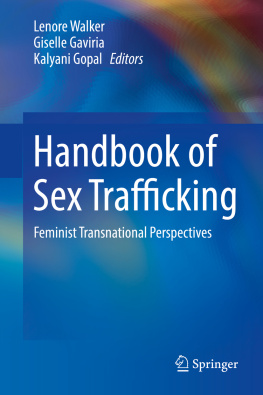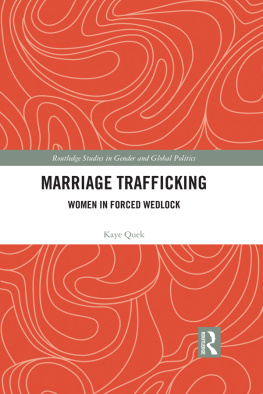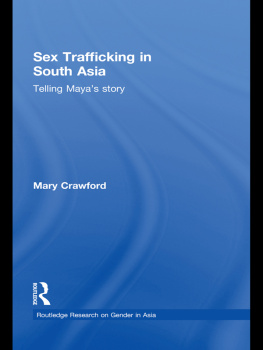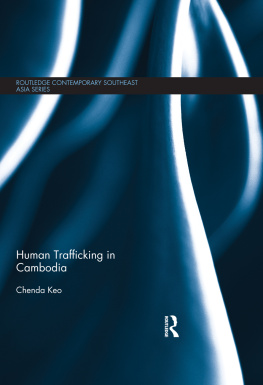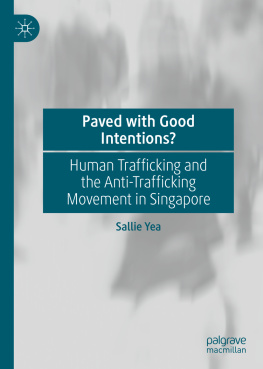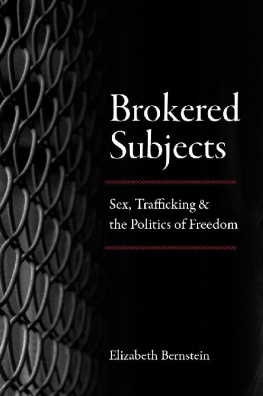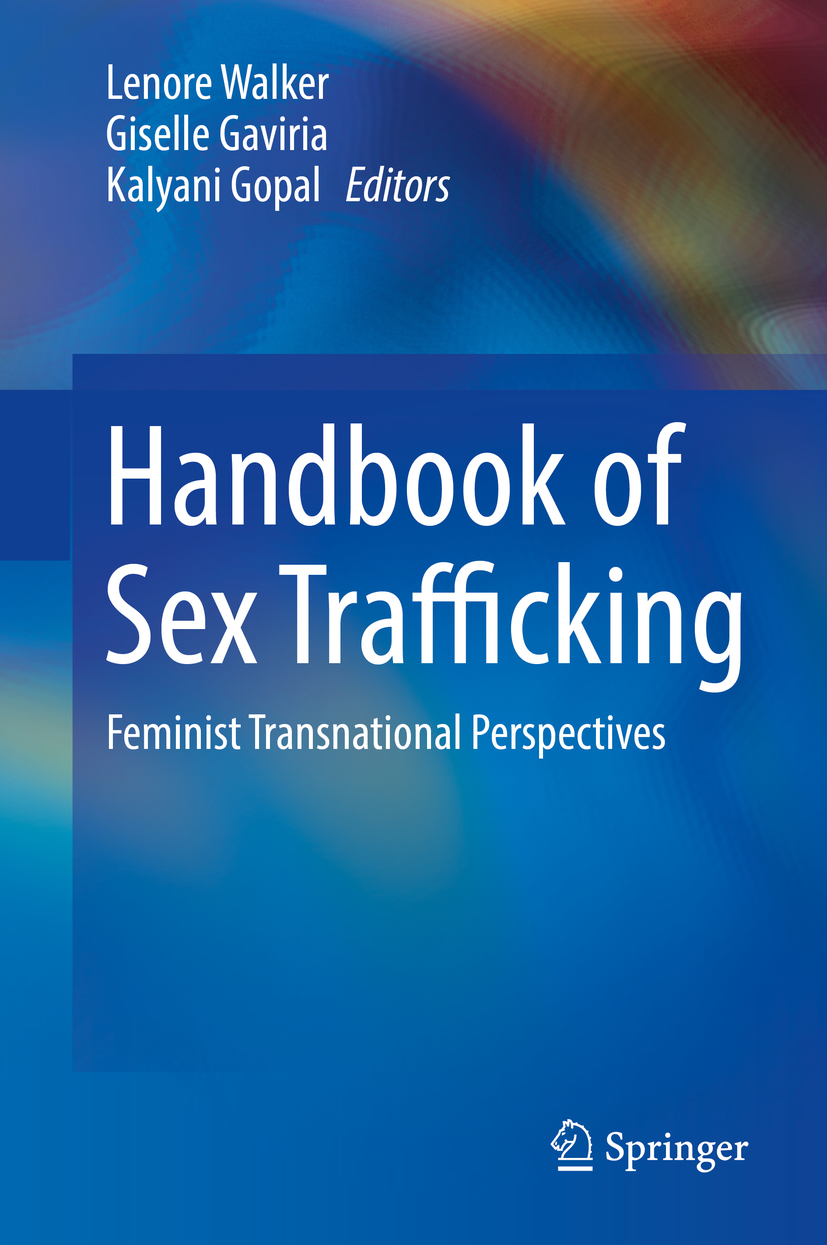Editors
Lenore Walker
Nova Southeastern University, College of Psychology, Fort Lauderdale, FL, USA
Giselle Gaviria
Walker and Associates, Fort Lauderdale, FL, USA
Kalyani Gopal
SAFE Coalition for Human Rights, Chicago, IL, USA
ISBN 978-3-319-73620-4 e-ISBN 978-3-319-73621-1
https://doi.org/10.1007/978-3-319-73621-1
Library of Congress Control Number: 2018960258
corrected publication 2019
Springer Nature Switzerland AG 2018
This work is subject to copyright. All rights are reserved by the Publisher, whether the whole or part of the material is concerned, specifically the rights of translation, reprinting, reuse of illustrations, recitation, broadcasting, reproduction on microfilms or in any other physical way, and transmission or information storage and retrieval, electronic adaptation, computer software, or by similar or dissimilar methodology now known or hereafter developed.
The use of general descriptive names, registered names, trademarks, service marks, etc. in this publication does not imply, even in the absence of a specific statement, that such names are exempt from the relevant protective laws and regulations and therefore free for general use.
The publisher, the authors, and the editors are safe to assume that the advice and information in this book are believed to be true and accurate at the date of publication. Neither the publisher nor the authors or the editors give a warranty, express or implied, with respect to the material contained herein or for any errors or omissions that may have been made. The publisher remains neutral with regard to jurisdictional claims in published maps and institutional affiliations.
This Springer imprint is published by the registered company Springer Nature Switzerland AG
The registered company address is: Gewerbestrasse 11, 6330 Cham, Switzerland
Preface
We called this book Handbook of Sex Trafficking: Feminist Transnational Perspectives to reflect the most recent scholarship and practice for mental health clinicians working with survivors of the commercial sex trade. We have brought together authors from a variety of perspectives who have knowledge of working within the commercial sex trade industry. Given the recent focus on the topic of sex trafficking, we have included chapters with information from both academic scholars and those who are working in this area in various countries.
The term transnational feminism is now being used to denote what is perhaps the fourth wave of feminist scholarship that originated with the social science studies of the global economy and politics that transcends national and even regional borders. This is often due to supply and demand, with the demand for sex workers taking place in countries with resources to afford the trafficking industry and the supply that can be filled by those poorer countries, often in the Third World or colonized areas, where the supply is available and people are willing to emigrate to another country. Although the politics of the various governments continue to play a role, in fact, movement across borders for both people and goods has become much easier than ever reported previously.
The feminist part of the definition includes the study of power relationships and how gender, economics, and class impact on migration. In this book we particularly study the sex workers, many of whom migrate with or without knowing what the sex work will entail. We also discuss the conditions that give rise to the desire for migration, the economics that particularly impact women and the LGBTQ population, and the gender politics that intersect with vulnerability and recovery. We understand that our analyses come from sex workers who have left what is called the life and not from sex workers currently inside, often working under the belief that they stay because of free choice. We have read their reports in the literature but have not been persuaded that they entered the life all that voluntarily. Many sex workers have witnessed or experienced other forms of gender violence such as child abuse, domestic violence, sexual exploitation and harassment, and rape in addition to poverty, hunger, poor or no education, and lack of opportunity. Some are kidnapped and sold into trafficking, while others are lured and recruited in specific ways, but most go through certain similar stages of commitment to their new work that are visible when we study large numbers of girls and women. One stage of commitment occurs when the sex worker makes the choice to remain in the life without coercion and with the knowledge of what the work will encompass. After all, if everyone entered the commercial sex trade voluntarily because it is such a desirable job, why would it be necessary for traffickers to lure, trick, purchase, kidnap, and enslave the women into their stables? Nonetheless, we continue to explore and respect the discussions of choice and consent provided by those active sex workers themselves.
The issue of sex trafficking has been added to the list of gender-based violence topics during the past 20 years following a period of about 30 years of feminist discourse around the issue of consent and choice for those women (and some heterosexual men and identified LGBTQ persons). Both groups of feminists believe that sex trafficking comes about because of the sexual, economic, and inequitable development and globalization of the world causing some girls and women to believe they have no other future. Both groups believe in the feminist understanding that the inequality between women and men causes men to have more power than women and therefore more options to earn money and have a future in the world. This is a social construction of the problems we are discussing. The divergence comes about with the issue of whether or not some sex workers have consented to work in the commercial sex industry with understanding of what is required. One group, often referred to as the transnational anti-trafficking networkers, believes that such consent is impossible because of the intersecting conditions that cause the lack of other choices, while the other group, often referred to as the sex worker activists, claims that a large number of sex workers who migrate know what the work entails and freely choose it.
The differences between these two groups, despite their feminist similarities, are important for those of us who are interested in prevention and recovery when working with survivors of sex trafficking. If our portrayal of the typical sex worker is one who is naively duped into their life of horror from which escape is nearly impossible, we miss the positive parts of the experience that keep these girls and women going back to what they call the life. Human rights networks suggest that prostitution should be seen as a form of labor engaged with self-determination and not as a result of violence against women although they do concede that sex trafficking may not be voluntarily entered into by many young girls, boys, and LGBTQ-identified persons. In these discussions there is often a distinction made between prostitution and sex trafficking with the former being voluntary and the latter coerced. Other feminists conclude that the gendered structure of life prohibits true free choice. We include these discussions in various articles throughout this book, hoping that readers will form their own opinions, listening to both sides of the story.

